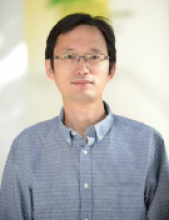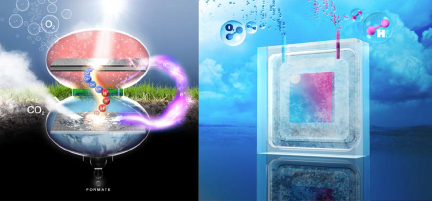ChEMS Seminar: Modeling, Simulation and Prototyping Development of Solar-Fuel Devices

Joint Center for Artificial Photosynthesis
California Institute of Technology, Pasadena, CA
Abstract: Producing fuels directly from sunlight using cost-effective and earth-abundant materials with scalable processes offers a unique opportunity and design space for long-term, grid-scale energy storage. Efficient solar-fuel devices require synergistic assembly of light absorbers, electrocatalysts, membrane separators and electrolytes. Our team developed a robust multiphysics continuum model for solar fuel devices that accounts for key photoelectrochemical processes in a device. Using this model, we are able to define target materials properties to constrain operational conditions, and to explore novel and viable device architectures for solar-fuel devices.
In particular, the modeling provided design guidelines for minimizing the polarization losses associated with pH gradients, local CO2 concentrations and electrodialysis in solar-fuel devices. Through modeling guided-device development, our team demonstrated integrated solar-hydrogen devices with conversion efficiency exceeding 10 percent and device stability exceeding 100 hours at the laboratory scale (~ 1 cm2) with product separations. Various device configurations have been implemented, including photocathode devices and photoanode devices, as well as devices that operated at alkaline conditions, at acidic conditions and at near-neutral pH conditions. Leveraging the solar water-splitting work, we have recently constructed a proof of concept: a bipolar-membrane-based solar-driven CO2 reduction device with a high solar-to-fuel conversion efficiency of 10 percent under 1.0 sun illumination. The device operated in two electrolytes with different pHs to achieve the optimal performance and the lowest overpotentials for oxygen evolution reaction and CO2 reduction to formate with robust product separations.

Bio: Chengxiang (“CX”) Xiang is a principal investigator and staff scientist at the Joint Center for Artificial Photosynthesis (JCAP) at the California Institute of Technology. He joined the chemical and materials physics program at UC Irvine in 2004 and worked as a graduate researcher in Reginald Penner’s lab from 2005 to 2009. Xiang received his doctorate in physics in 2009, then went to the California Institute of Technology as a postdoctoral scholar. Xiang's research interests include design and fabrication of high-efficiency solar-fuel prototypes, opto-electronic-catalytic modeling of advanced micro/nanostructured photoelectrochemical systems, multi-ion transport modeling in solution and polymer electrolytes, and high-throughput experimentation for materials discoveries for solar-fuel applications.
http://solarfuelshub.org/chengxiang-cx-xiang/
http://sunlight.caltech.edu/cx/
Host: Shane Ardo
Share
Upcoming Events
-
MSE 298 SEMINAR: What One Material Can Do
-
MAE 298 SEMINAR: Origins of Strengthening in Complex Metal Alloys from Full-scale MD Simulations
-
CBE 298 Seminar: Conductive and Tough Bioadhesive Hydrogel for Tissue Engineering and Biosensing
-
Annual Design Review 2025
-
CBE 298 Seminar: The Role of Carbon Removal in Achieving Net-Zero Greenhouse Gas Emissions
